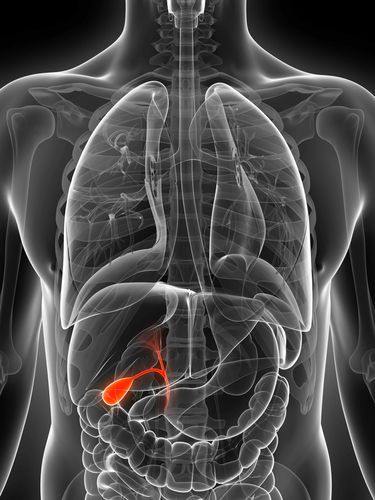
The gall bladder is located on the right side of the abdomen, just below the rib cage. It is part of the biliary system that drains bile from the liver, and is a bile reservoir and concentrator.
Gallstones are usually formed of cholesterol, calcium bilirubinate and calcium carbonate. A majority of gallstones are asymptomatic, which means the person doesn’t have any symptoms related to gall bladder disease; 60 to 80 per cent of stones stay in the gall bladder without any symptoms.
In symptomatic gallstone disease, there is pain in the right abdomen, which radiates to the back and to the right shoulder. There could also be fullness of stomach and vomiting. Occasionally, the person might have jaundice if the stone slips into the bile duct, blocking bile flow from the liver to the intestine.
Infection of the gall bladder because of the stones, called acute cholecyctitis, causes severe pain, along with fever. More severe forms could cause acute pancreatitis.
Risk factors
Obesity and diabetes, fried and oily food with high cholesterol, and sedentary habits are risk factors for gallstones. Prolonged fasting, excessive spicy and chilly food, inadequate fibre and poor water intake contributes to gallstone formation.
Infection of the gall bladder also promotes stone formation and vice-versa.
The five Fs, which increase the chances of gall bladder disease, are—fair (Caucasian), fat, fertile, forty (age) and female.
Some people are prone to gallstone disease if they suffer from haemolytic diseases.
Treatment
Ultrasonography is a major diagnostic tool for gallstones.
A majority of the patients do not need any treatment as their gallstones are asymptomatic. But they need an annual followup ultrasonography and advice to prevent complications. These patients are advised diet control, exercise and good hydration.
Symptomatic gall stones can be treated by medication, lithotripsy and surgery.
Cholesterol stone could be treated with ursodeoxycholic acid for two years, but it is not as effective as surgery.
Extracorporeal shockwave lithotripsy could also be used, but it has complications that need major therapeutic and surgical interventions.
Surgery and cholecystectomy are the mainstays of treating symptomatic gallstones.
Advances in surgery
Open surgeries are being replaced by laparoscopic procedures. Large incisions, abdominal tubes, prolonged recovery and complications associated with open surgery are being replaced by laparoscopic cholecystectomy, which has key hole incisions, quick recovery, significantly reduced pain and complications. The patient could even be discharged within 24 hours.
Robotic cholecystectomy and natural orifice (without skin incision) cholecystectomy are also done, but laparoscopic cholecystectomy is the gold standard.
Dr Abhijit Thakur is consultant lap surgeon, Cumballa Hill Hospital and Heart Institute, Mumbai.





